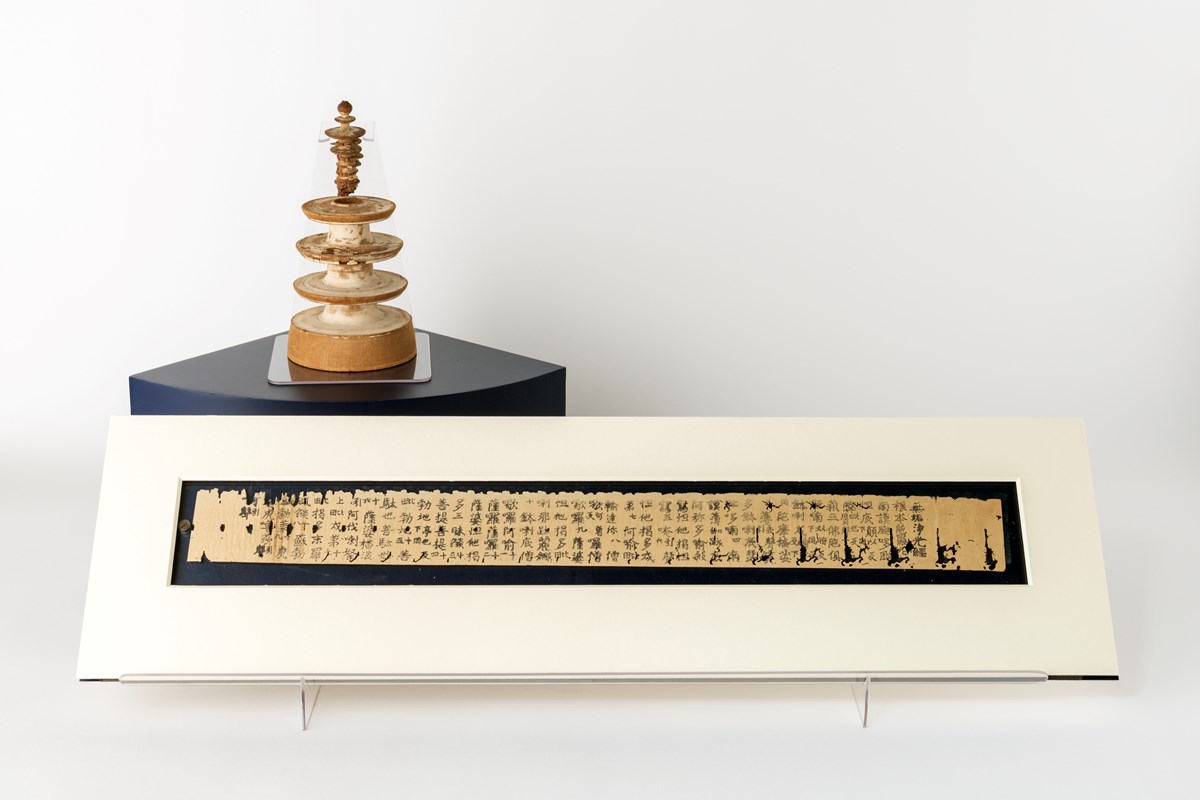One of the Hyakumantō Darani, also known as the 'One Million Pagodas and Darani Prayers', commissioned by Empress Shōtoku.
In AD 764, the Japanese Empress Shōtoku commissioned a million miniature wooden pagodas containing Buddhist prayers, called darani, printed on scrolls. They are among the earliest known printed works, and the scroll is the oldest printed item in our collections. The pagodas measure about 20 centimetres tall. Empress Shōtoku commissioned the Hyakumantō Darani after a return to the throne, following the suppression of a rebellion. The pagodas and scrolls are thought to be a form of atonement for the deaths caused by the rebellion. These darani, a type of protective charm or mantra, are in Chinese, but are taken from Sanskrit. Both pagoda and darani are important to the rituals of Buddhist worship. Pagodas evolved from the Buddhist burial mounds called stupas, some of which housed relics of the Buddha. Production of the one million pagodas and printed texts was completed in AD 770. The pagodas, with the text rolled up inside, were distributed to 10 temples around Japan.

